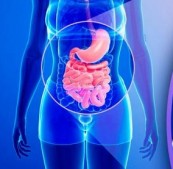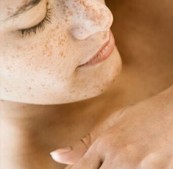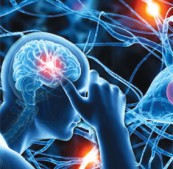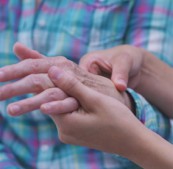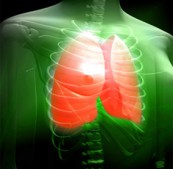Dystonia

Dystonia is a neurological movement disorder in which sustained or repetitive muscle contractions result in twisting and repetitive movements or abnormal fixed postures. The movements may resemble a tremor, Dystonia is often intensified or exacerbated by physical activity, and symptoms may progress into adjacent muscles.
Dystonia usually have normal intelligence and will not be associated with psychiatric disorders.
TYPES BASED ON CAUSE
Primary dystonia- Almost Idiopathic reason
- Dystonia is the only sign and there is no identifiable cause or structural abnormality in the central nervous system
Secondary dystonia- dystonia brought on by some identified cause such as
- Head injury
- Drug side effect (e.g. Tardive dystonia)
- Neurological disease (e.g. Wilson's disease)
TYPES BASED ON SYMPTOMS
Generalized Dystonia - Normal birth history and milestones, Autosomal dominant, Childhood-onset, starts in lower limbs and spreads upwards
Focal Dystonia -
| Name | Location | Description |
|---|---|---|
| Anismus | Muscles of the rectum | Causes painful defecation, constipation; may be complicated by encopresis |
| Cervical Dystonia (spasmodic torticollis) | Muscles of the neck | Causes the head to rotate to one side, to pull down towards the chest, or back, or a combination of these postures. |
| Blepharospasm | Muscles around the eyes | The sufferer experiences rapid blinking of the eyes or even their forced closure causing functional blindness. |
| Oculogyric crisis | Muscles of eyes and head | An extreme and sustained (usually) upward deviation of the eyes often with convergence causing diplopia(double vision). It is frequently associated with backward and lateral flexion of the neck and either widely opened mouth or jaw clenching. Frequently a result of antiemetics such as the neuroleptics (e.g., prochlorperazine) or metoclopramide. Can be caused by Chlorpromazine. |
| Oromandibular dystonia | Muscles of the jaw and muscles of the tongue | Causes distortions of the mouth and tongue. |
| Spasmodic dysphonia/Laryngeal dystonia | Muscles of larynx | Causes the voice to sound broken, become hoarse, sometimes reducing it to a whisper. |
| Focal hand dystonia (also known as musicians or writer's cramp). | Single muscle or small group of muscles in the hand | It interferes with activities such as writing or playing a musical instrument by causing involuntary muscular contractions. The condition is sometimes "task-specific," meaning that it is generally apparent during only certain activities. Focal hand dystonia is neurological in origin and is not due to normal fatigue. The loss of precise muscle control and continuous unintentional movement results in painful cramping and abnormal positioning that makes continued use of the affected body parts impossible. |
Segmental Dystonia
Segmental dystonias affect two adjoining parts of the body:
- Hemidystonia affects an arm and foot on one side of the body.
- Multifocal Dystonia affects many different parts of the body.
- Generalized Dystonia affects most of the body, frequently involving the legs and back.
Causes (Nidana)
The disorder maybe
- Hereditary
- Birth-Related
- Physical Trauma
- Infection
- Poisoning (E.G., Lead Poisoning)
Reaction to pharmaceutical drugs, particularly Neuroleptics
Ayurveda Aspects of Dystonia
Vata one of the Doshas among the ‘Tridosha’ concept, gets aggrevated in mamsa dhathu there by causing Dystonia.
Ayurveda treatment aspect of Dystonia
The Dystonia is treatable according to Ayurveda, the classical treatment advised for Dystonia are
Panchakarma
Ayurveda takes a unique approach to the management by Ayurvedic principles with a special emphasis on eliminating their causes by Panchakarma and medicinal treatment with the help of a wide range of herbal and herbo-mineral drugs. Ayurveda describes a large number of nootropic drugs (stimulating to mental activity, causing cerebral or intellectual activity) and nervous system tonics (i.e., Rasayana in the treatment of Vata diseases). Being a neuro degenerative disease, Dystonia is treated by Rasayana or Rejuvinative approach in Ayurveda. Rasayana drugs are essentially nutraceutical agents and Medhya Rasayana is specific neuro-nutrients or nervine tonics with nootropic effect.
Medication
Internal medicines and external applications of medicines play a key role in treatment of Dystonia. Internal medicines include Kashaya (Decoction), tablets, capsules, Ghruthas (medicated Ghee) Bhasmas and medicated oils.
Additional Treatment:
- Splinting
- Therapeutic exercise
- Manual stretching
- Soft tissue and joint mobilization
- Postural training and bracing
- Neuromuscular electrical stimulation
- Constraint-induced movement therapy
- Activity and environmental modification
- Gait training
Prevention
Reducing psychological stress, in conjunction with exercise, is beneficial for reducing truncal dystonia in patients with Parkinson’s disease.
